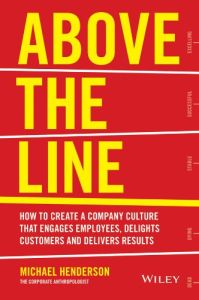Join getAbstract to access the summary!

Join getAbstract to access the summary!
Michael Henderson
Above the Line
How to Create a Company Culture That Engages Employees, Delights Customers and Delivers Results
Wiley, 2014
What's inside?
“Culture eats strategy for breakfast, lunch, dinner, morning tea, afternoon tea and as a midnight snack.”
Recommendation
Culture drives everything, and it evolves naturally, but doesn’t have to be random. You can shape your organization’s culture deliberately with the process of “culturing,” and then tend to it carefully. Many leaders ignore culture’s power and instead post meaningless mission statements or issue platitudes about values. Michael Henderson, a corporate anthropologist, applies his considerable experience within organizations to the question of culture. He describes levels of cultures from “dead” and “dying” to “successful” and imbued with excellence. He shows readers how to identify these levels and how to help their organizational culture evolve. Henderson’s guide contains many nuggets of wisdom and excellent advice, though the read can be slow and some sweeping statements would benefit from additional sourcing. getAbstract recommends Henderson’s insight and guidance to leaders across all industries and to all sizes and kinds of companies, including nonprofits.
Summary
About the Author
Cultural anthropologist Michael Henderson studies corporate cultures just as social scientists study tribal cultures. Henderson has written several books about this specialty.

















Comment on this summary